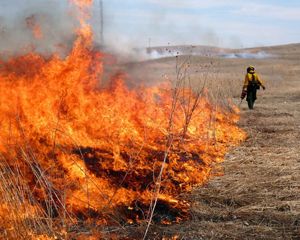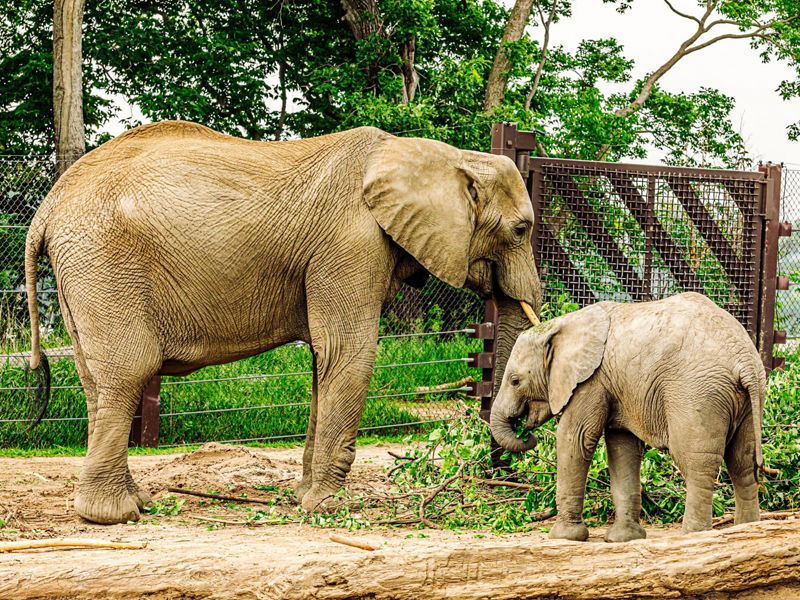
Elephants Eating African elephants at the Henry Doorly Zoo and Aquarium snacking on twigs and leaves gathered the day before at TNC's Folsom Point Preserve. © Joshua Foo Photography
On a cool, overcast morning in June, 3-year-old Sonny wakes up full of energy and ready to explore the world around him. The minute he steps outside, he spots something new and runs toward it at full throttle.
Sonny isn’t just any toddler, though—he’s an African elephant calf, one of five born at Omaha’s Henry Doorly Zoo and Aquarium since 2022. And the exciting discovery in his habitat? A pile of freshly cut white mulberry branches, collected the day before at a Nature Conservancy (TNC) preserve as part of a partnership that benefits both the zoo and local grasslands.

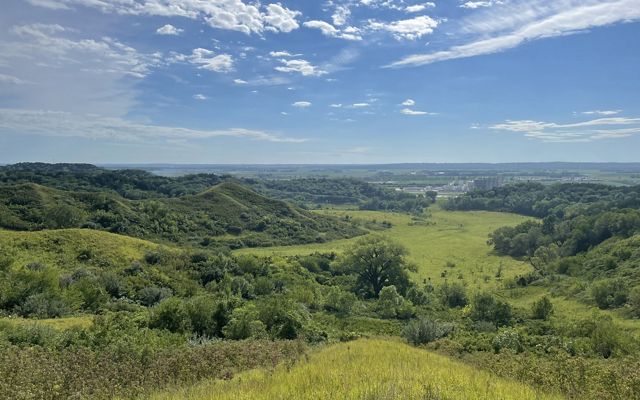
An Imperiled Ecosystem
At TNC’s Folsom Point Preserve, just south of Council Bluffs, Iowa, open prairie ridges rise dramatically out of the Missouri River floodplain. Prairie plants, birds and butterflies—as well as the rare Great Plains skink—thrive in what’s called a remnant prairie, meaning it’s never been developed or used for agriculture.
Less than 5% of the tallgrass prairie that once stretched from Canada to Texas remains. “It’s the most imperiled ecosystem in the world,” says Graham McGaffin, Iowa state director for TNC.
That’s why it’s important to conserve places like the 300-acre grassland preserve, he says. And that means carefully managing the land—an ideal spot not just for nature, but for people who enjoy hiking, photography and birdwatching—to make sure trees and shrubs don’t transform the sunny prairie into an impenetrable thicket.
Quote: Graham McGaffin
If not controlled, these trees and shrubs can become overgrown, and the habitat that's provided by the prairie is lost. And when those grasslands disappear, there are not only challenges for wildlife, but also challenges from erosion and washouts and soil running into waterways.
Conducting controlled burns (which take the place of wildfires that historically helped keep the prairie open), mowing small saplings and working with volunteers to remove larger trees are all effective ways to manage invasive vegetation. But TNC alone doesn’t have enough hours in the day or boots on the ground to get all the work done, McGaffin says.
Powerful Partnership
That’s where Omaha’s Henry Doorly Zoo & Aquarium, which houses more than 39,000 animals representing more than 1,000 species, comes in.
Many animals in the zoo benefit from fresh leaves, bark, twigs and branches (known as “browse”), which is highly nutritious and also provides behavioral enrichment for some animals. Once or twice a month, throughout the year, a crew of zoo team members armed with chainsaws and brush cutters heads to Folsom Point Preserve, a short 15-minute drive from the zoo, to remove invasive trees and shrubs such as box elder, Russian olive, dogwood and mulberry.
The crew then loads the brush into a truck and hauls it back to the zoo, where the browse team determines which species are best for specific animals.
“If you keep your eyes open around the zoo, you can find animals interacting with browse in just about any area that you visit,” says Dakota Wagner, browse program supervisor.
For example, Sonny and the other nine elephants in the zoo’s herd eat twigs and leaves and also enjoy playing with larger branches indoors in the winter. Giraffes, which eat about 300 pounds of leaves a week, extend their 18-inch tongues to grasp mulberry twigs from delighted visitors as part of the popular Giraffe Encounter. And macaws like to rip branches apart with their sharp beaks, Wagner says.
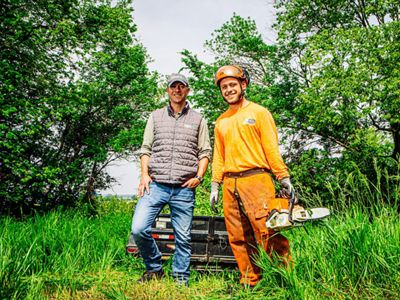
Both Wagner and TNC’s McGaffin say the partnership benefits both organizations: TNC gets help managing a vulnerable prairie ecosystem for both people and wildlife, and the zoo receives free high-quality nutrition and enrichment for animals.
“When people think of our conservation efforts at the zoo, they'll likely think about animal species,” says Wagner. “But what makes the partnership with The Nature Conservancy unique is that we're also able to help with local habitat conservation.”

Shrubbier Prairies
Across the Great Plains, invasive trees and shrubs—known as woody plants—are gradually moving into native grassland habitats. If they’re not removed or cut back, they can replace vulnerable prairie ecosystems with dense thickets that prevent native prairie species from thriving.
“Grasslands provide clean water, clean air and carbon sequestration, and they’re also a core identity of the Great Plains and the people here,” says Chris Helzer, Nebraska director of science and stewardship for TNC. “We have to be thoughtful about maintaining these grasslands, because if we don’t, they will disappear.”
Controlling invasive woody plants with prescribed burns, hand-cutting and other methods is important, he says, but he and other scientists wonder whether we might have to learn to live with what he calls “shrubbier prairies.”
Helzer has convened a group of researchers to study how to manage deciduous trees and shrubs like dogwood, plum and sumac—which have increased in part because of growing levels of atmospheric CO2—in grasslands.
“Until now, it’s been all about fighting them off, but there are a lot of grasslands where we're not going to be able to eradicate them completely,” he says. “Instead, we’re thinking about how we can do things like managing the height and the density of those shrubs so we don't lose grassland birds and pollinators. And that's kind of a fun challenge.”
Explore the Partnership in Photos

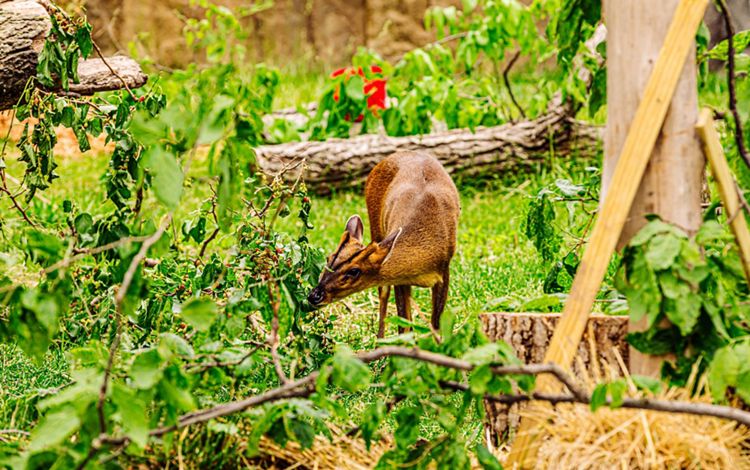

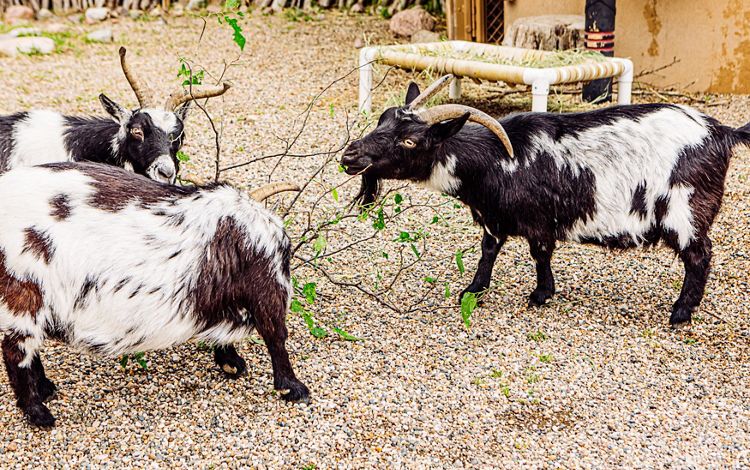
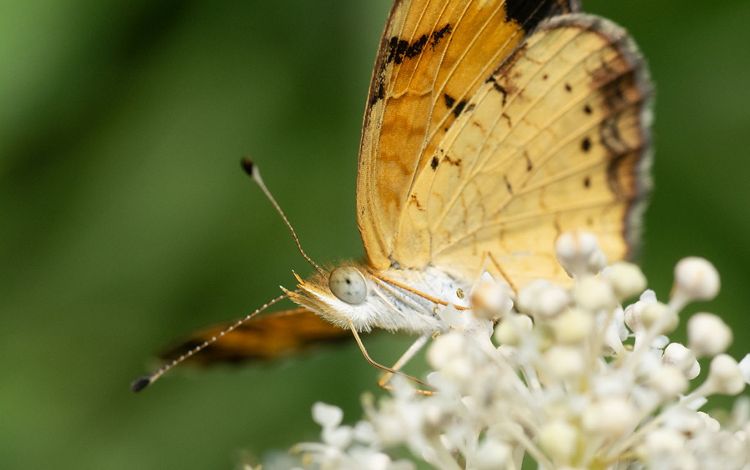
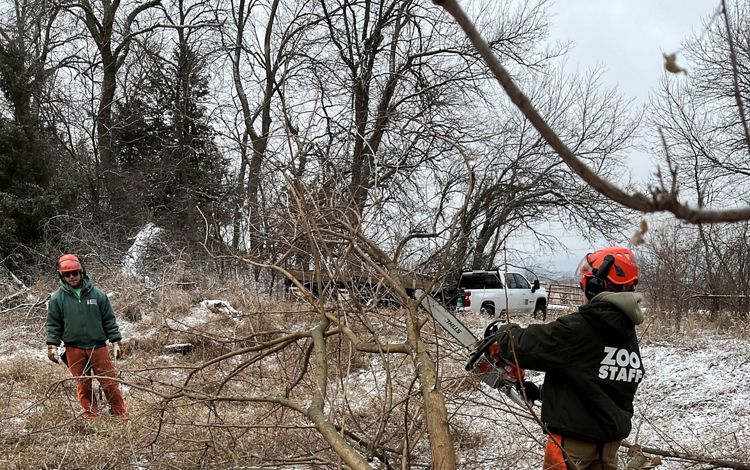
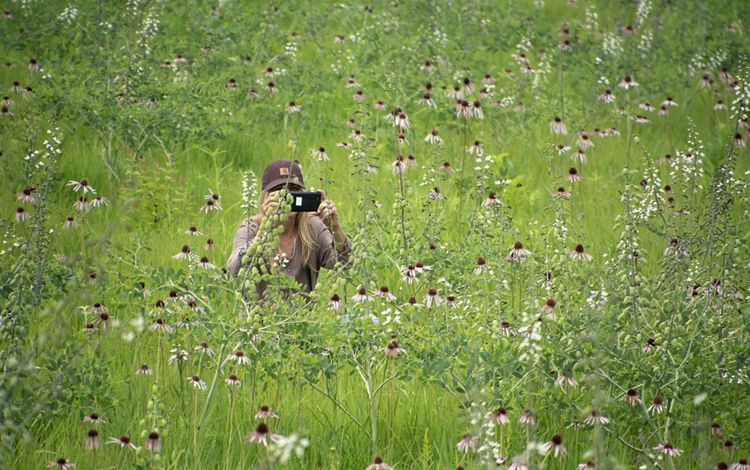
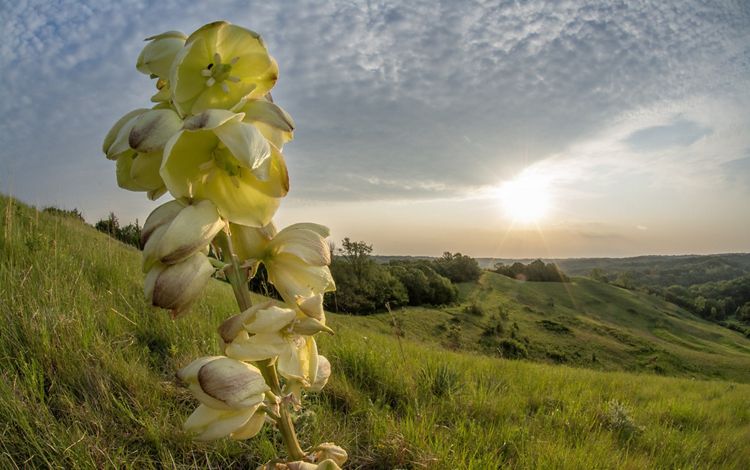
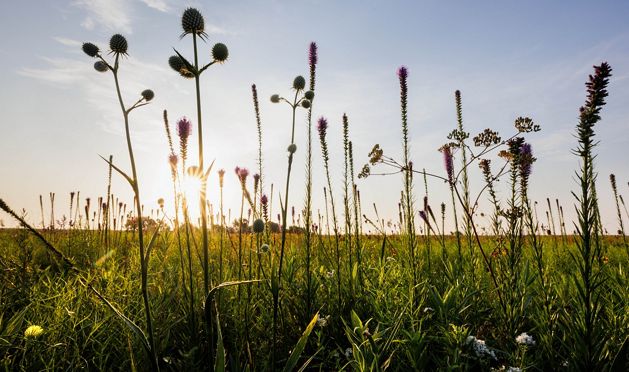
Need more nature news?
Sign up for our monthly e-newsletter and get more of the news you want.
